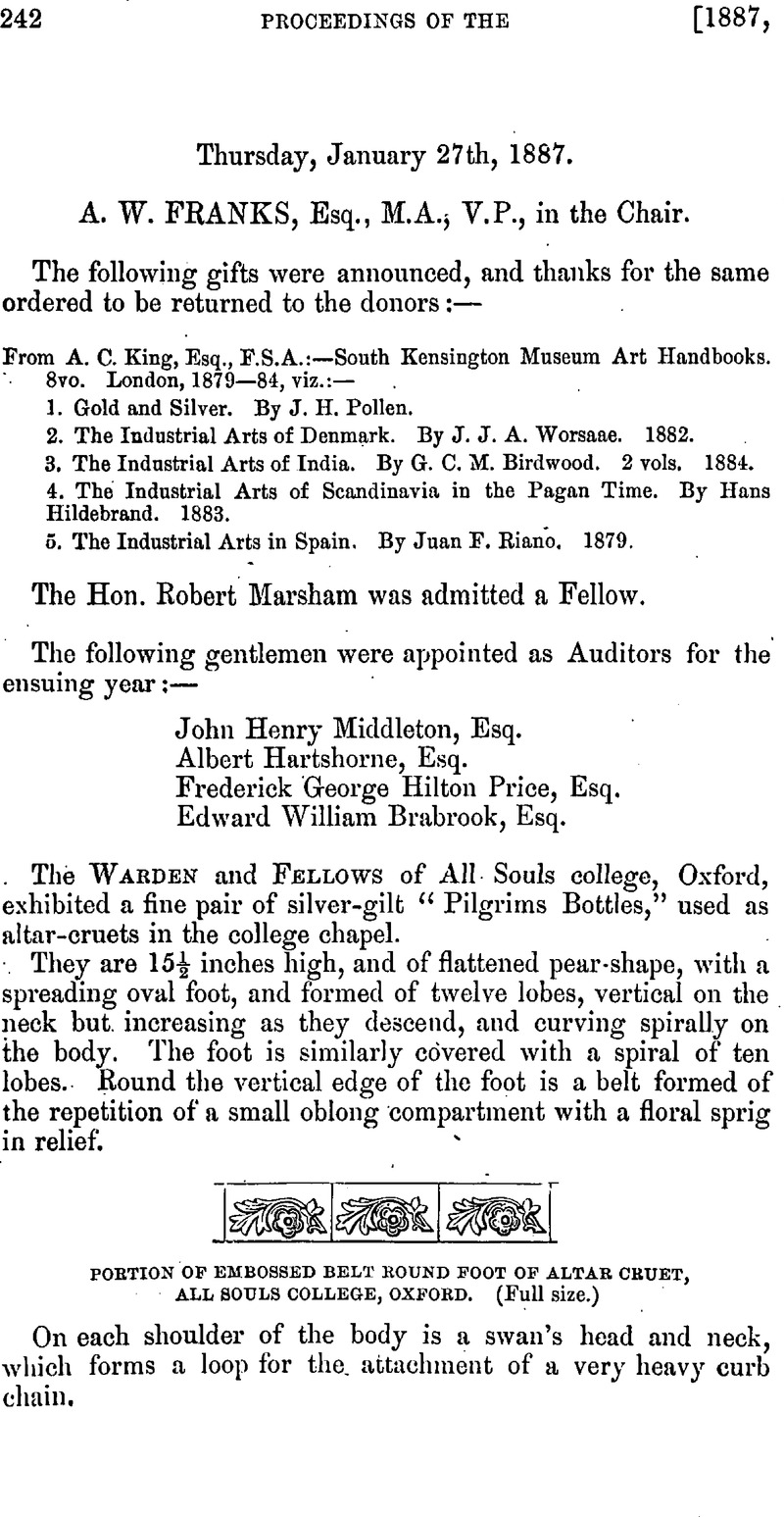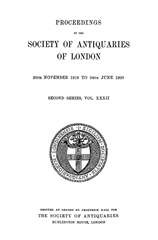No CrossRef data available.
Article contents
Thursday, January 27th, 1887
Published online by Cambridge University Press: 10 May 2010
Abstract

- Type
- Proceedings
- Information
- Copyright
- Copyright © The Society of Antiquaries of London 1887
References
page 244 note * Testamenta Eboracensia (Surtees Society), iii. 234.
page 244 note † State Papers, Henry VIII., vol. 17, No. 1912.
page 250 note * Ancient Bronze Implements, p. 312, fig. 379.
page 244 note † A brooch of precisely similar shape is engraved in the Catalogue of the Antiquities of Animal Materials and Bronze in the Museum of the Royal Irish Academy (1861), p. 566.
page 251 note * For historical reasons it seems almost certain that the writer is in error here ; and that he means, not Xerxes, but Dureios, who sacked Miletos in B.C. 494.
page 252 note * A number of instances of these types in archaie Greek and oriental art are collected in the Arch. Zoitung, 1854, taf, lxi,-lxiv.
page 252 note * The illustration in King's Antique Gems, Introd. p. xii. is evidently a feeble rendering of the British Museum sard. King saw it in the Mertens-Schaafhausen collection, from which Castellani bought largely; from Castellani it passed to the British Museum in 1865, with no note of provenance.
page 252 note † See Murray, Greek Sculpture, i. 140, note 2.
page 255 note * IX. 10, 2. His expression shows that in his time, at any rate, there was little or no variation between the two types. Thus he says of the Theban type, Τ δ ἄγαλμα μεγθει τε ἴσον τῷ ν Βραγχσαις στ, κα τ ε༲δος οὐδν διαφρως ἔχον. And further : Διαφρουσι δ τοσνδε (“just so far”) μν γρ ν βραγχδαις χαλκο, δ ʼIσμνι κδρον.
page 255 note † Nat. Hiat. xxxiv. 19. ‘Canachus Apollinem nudum, qui Philcsius cognominatur in Didymaeo, Æginetica aeris temperatura. Cervumque una vestigiis suspendit, ut linum subter pedes trahatur, alterno morsu calce digitisqne retinentibus solum, ita vortebrato dentc utrisque in partibus ut a repulsu per vices resiliat.’ The obscurities of tbis passago are quite hopeless, unless we can explain them as due here as well as in other similar cases in Pliny's works, to a misconstruction of his Greek authority.
page 257 note * i.e. an infant deer.
page 258 note * i.e. a brocket, a young deer.


